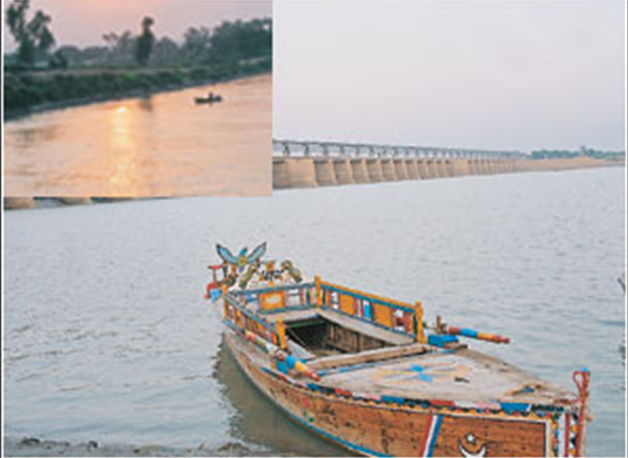Indus (river)
This is a collection of articles archived for the excellence of their content. Readers will be able to edit existing articles and post new articles directly |
Indus
Incredible Indus
By Syed Farooq Al
While travelling on Super Highway to reach Hyderabad, the first Indus crossing comes near Jamshoro at the Ghulam Muhammad Barrage, 164kms away from Karachi. It was built in 1955. The barrage and its beautiful surroundings offer a great view of the mighty Indus, with a fishing site and fish restaurant located in a green area on the west bank of the river. The barrage has the potential to develop into a tourist resort and can contribute to achieving the national objective of attracting more tourists to Pakistan, and the advantage being its proximity with Karachi and Hyderabad.
The River Indus flows though the entire Pakistan and is the third longest river of Asia. With its origin somewhere in Tibet near mount Kailash and the termination point at the Indus delta east of Karachi, it is spread over an area of more than 200kms, making its way to discharge its water into the Arabian ocean.
At Jamshoro the Indus quietly flows. Great historical events are attached to the river as kings, admirals of fleets and traders have sailed through it, making their way to conquer territories or retreating back to the Arabian Ocean to travel to other parts of the world. The Indus used to be a lively river with barges, boats, canoes, dinghy and yachts sailing in it all year round.
The River Indus perhaps saw signs of the first civilisation in 2500BC when boats laden with trading goods started sailing from Harrapa and Moenjodaro to sail and back a southern course from the Arabian Ocean. Trade in those days flourished via the Indus up to Arabian and African ports.
Another important sailing was undertaken by Alexander the Great (326BC) when his retreating armies preferred a route through the river. It took Alexander 10 months to traverse the Indus from Punjab to Sindh. Reaching somewhere near Thatta he divided his armies into two. Alexander himself preferred a journey via plains of Balochistan to cross into Iran to reach Greece, while the other half sailed up to the mouth of the Indus somewhere near Karachi for onward journey to their country.
Contrary to Alexander’s retreat, the great Muslim Commander Muhammad bin Qasim (711AD) sailed his army into the Indus and took the other way round from the port of Debal and advanced up to Multan.
At times writers, historians and archaeologist have compared the Indus with the Nile pointing some striking resemblances. Some writers from the colonial times have even tried to equate Karachi with Alexandria and Hyderabad with Cairo.
Time passed and the Indus continued as a vital navigation river. The famous Moroccan traveller Ibne-Batuta (1325AD) traversed Sindh and described an event of pleasure sailing in the Indus. Batuta in the company of the then governor of Thatta was a guest to sail with a fleet of 15 ships with musicians and servants on board playing drums and trumpets and serving sumptuous food. In his travelogue Batuta has beautifully described his journey up to the mouth of the Indus which started perhaps somewhere near Sehwan and ended near Karachi in the Indus Delta in a town called Lehari.
Portuguese navel army (1555AD) entered the Indus with 25 ships, sailed northwest, reached Thatta and took control of the city. The Portuguese left after some time leaving Sindh back in the control of its rulers. Firuz Shah Tughlaq (1364AD) used the Indus water route to attack Thatta. His army comprised 90,000 horses and a large fleet of ships and barges. Writers, tourists, expedition lovers and sailors have all enjoyed sailing through the Indus.

